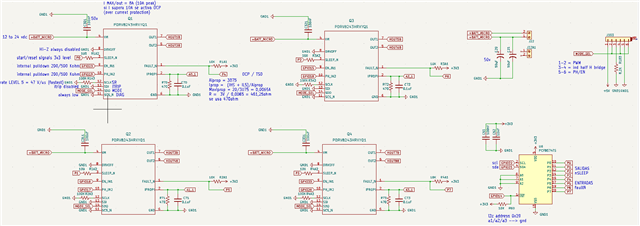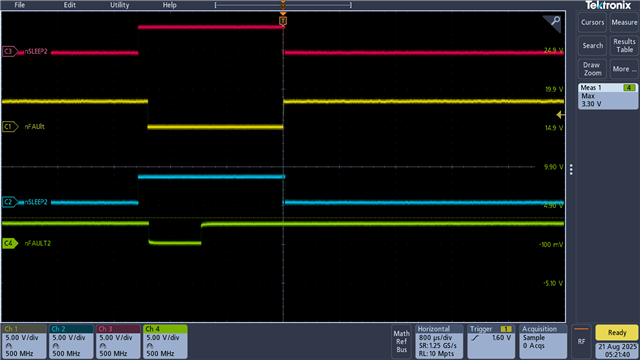Other Parts Discussed in Thread: PCF8574, ADS1115, DRV8243-Q1
Tool/software:
Hello Joshua, months ago I opened a thread "DRV8243H-Q1EVM: general configuration & layout revision".
I build some pcb boards according to schema provided in that thread. I'm testing them now but I'm facing some issues.
Looks like the IC is not receiving reset pulse correctly.
I'm using 4 pins of a pcf8574 to generate 3,3v SLEEP signals and 4 pins to read FAULTs.
During power on this sequence if followed:
- put pcf8574 sleep pin high,
- after 500 mili sec aprox execute the reset pulse (low)
- after 30 micro seconds put high again.
About i2c bus:
there is one ads1115
total pull up resistance 4,7K
Can pcf8574 cause problems?
Thanks





